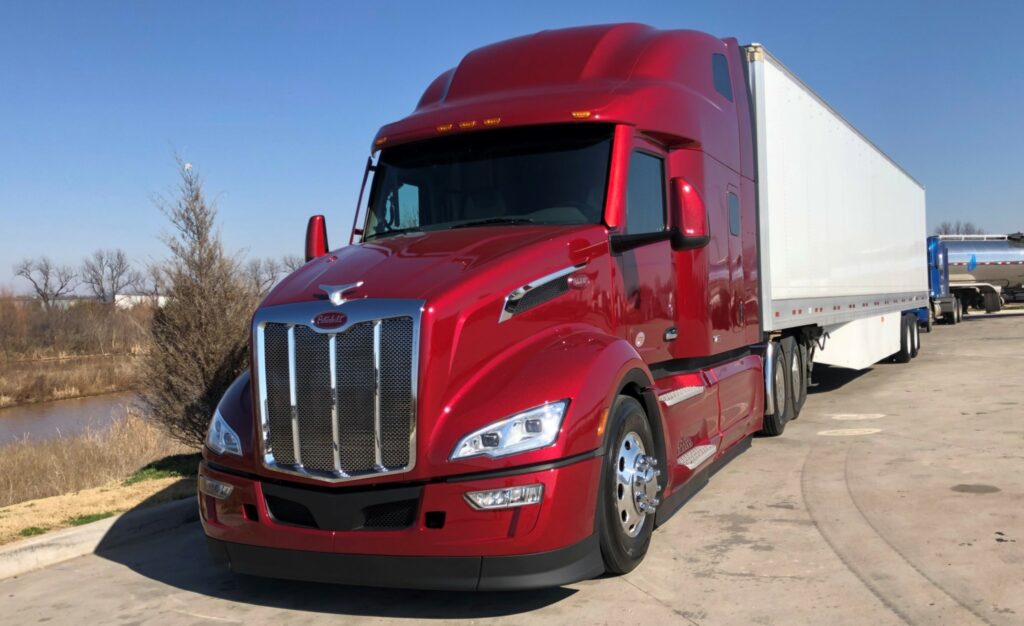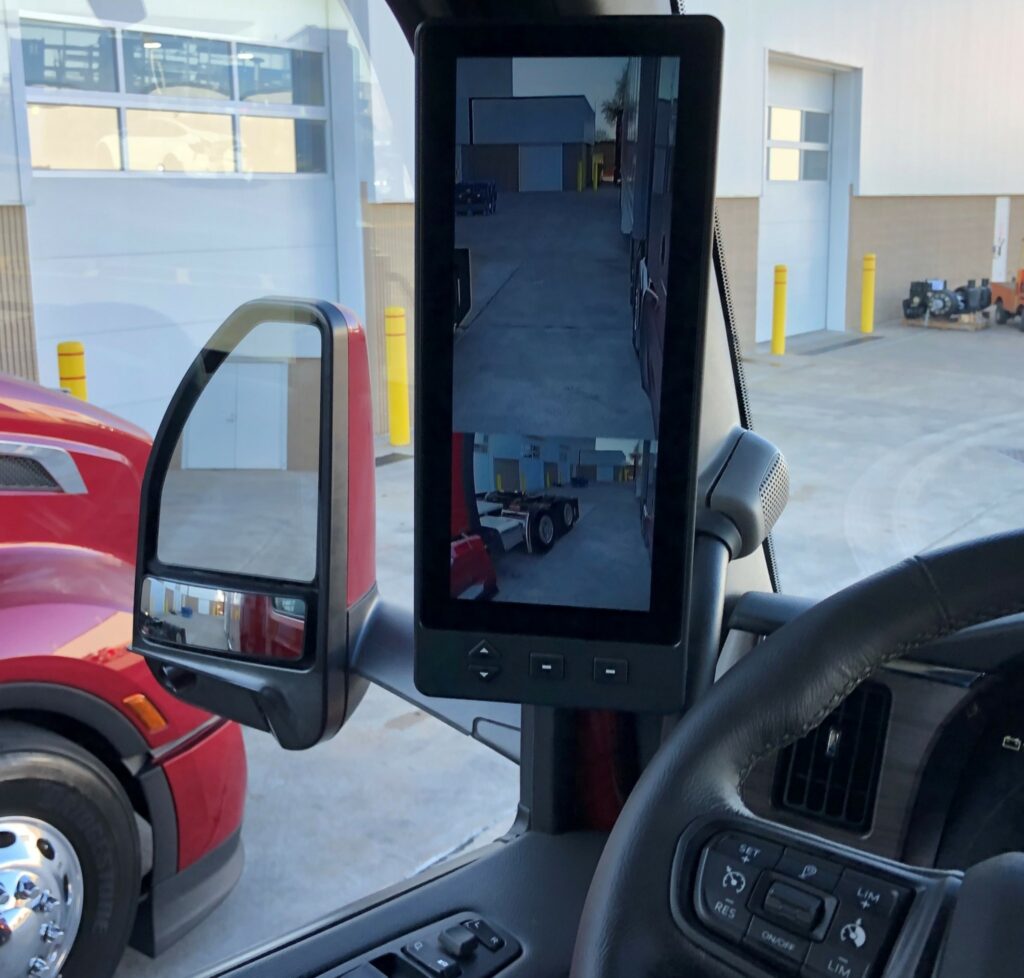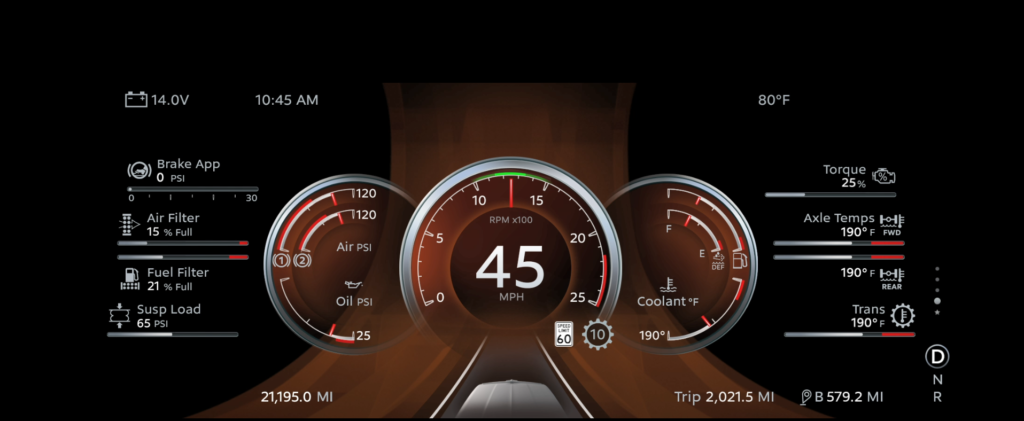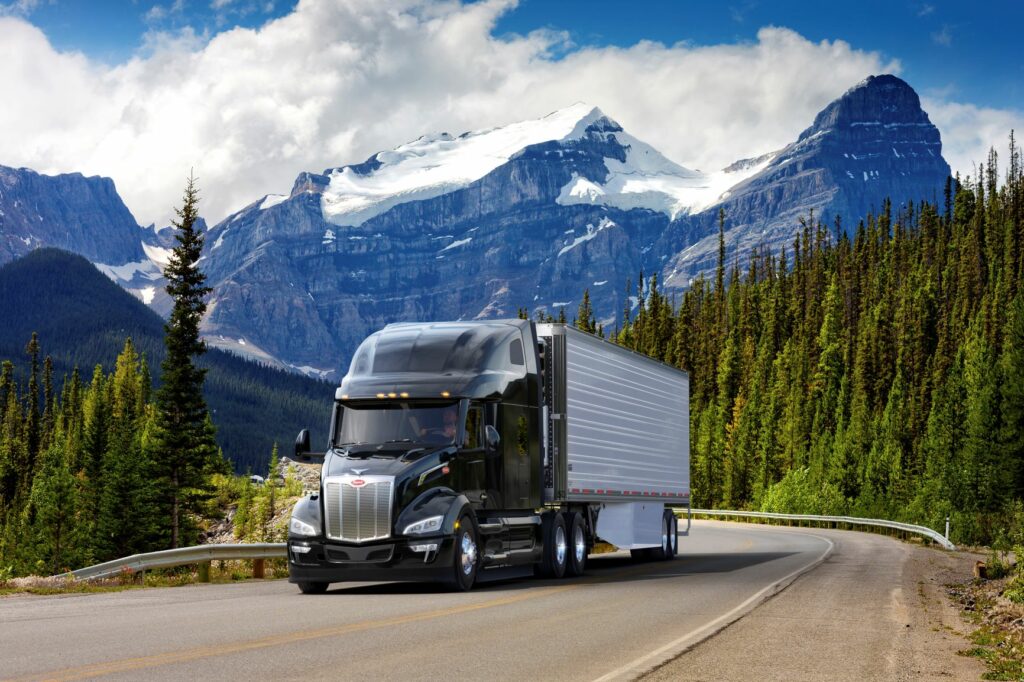Test Drive: Peterbilt’s New Model 579 Ultraloft
It felt good to be behind the wheel of a brand new tractor-trailer after months of Covid-induced quarantine – even if the plains of Central Texas aren’t the most scenic country a driver could ask for.
But, if you want to visit Peterbilt, you’re going to Texas – Denton, Texas, to be precise. And the flat, open, terrain simply comes with the job. And believe me, if you’re a Peterbilt fan, you most definitely want to drive the new 2021 model year Model 579 tractor. It’s a new version of Peterbilt’s flagship highway tractor, which debuted to much fanfare in 2012.
At the time, the Model 579 marked a new way forward for Peterbilt. The truck was an aerodynamic departure for the OEM with a comfort- and efficiency-focused interior that had been crafted with massive input from driver and fleet focus groups.

The latest version of the Model 579, however, is more than just a few exterior tweaks and trims. The new truck, which Peterbilt is calling the “New Model 579” for this, the first year of its launch, is actually the first major upgrade and reworking of the truck since its debut nine years ago.
The New Model 579 is the baby of Peterbilt product marketing director Jacob White, who spent the day with me in the truck as I put it through its paces on the lonely highways outside of Denton.
He told me the New Model 579 is, in many ways, an all-new truck. For one thing, it’s already-sleek aerodynamic front end has been enhanced. “To do that,” White explains, “we had to lower the radiator for better airflow and visibility. And that meant we needed to stiffen the truck’s chassis by 15% to accommodate those changes. This redesigned chassis was paired with new, acoustically tuned engine mounts which support highway cruising at 1,500 rpm while delivering an improved ride and significantly quieter cab interior, which is 10% quieter than the previous Model 579.”
But, at its core, White says, the New Model 579 is, quite simply, the most technologically advanced truck Peterbilt has ever built. It is jam-packed with new features and new technology, a new, highly refined host of aerodynamic enhancements, as well as optimized comfort and efficiency features inside the cab and sleeper.
Cutting edge looks and aero performance
Walking up to the New Model 579 for the first time, you’re struck by the sleek overall front profile of the truck. White says the development cycle for the new model took five years, and it shows. The most striking feature is the new hood, which is crafted from a lightweight material called Metton. It’s narrower than the hood on the previous 579 models – and more resistant to damage, White says. Of course, the iconic Peterbilt “Bird” sits proudly at the crest of the bold, stainless-steel radiator, with complimentary side accents and low, lean fenders with sculpted “valleys” near the truck body giving a sly design nod back to Peterbilts of old.
Adding to the overall front-end look are new, innovative (optional) LED headlamps, a three-piece bumper design and some truly well thought out fog lamps. The bumper has been designed from the drawing board to seamlessly incorporate a forward radar cover for collision mitigation systems, while the fog lights are fully integrated to complement the high-beam lamps and feature corning lights to illuminate both front bumpers when turning at night – one of several new features based on extensive driver input during the design phase, White notes.

The new rearview mirrors jump out at you, too. There will be two mirror options on the New Model 579. But my test truck was fitted with the new, cutting-edge Advanced Aero Mirror option, which are further equipped with the new Peterbilt Digital Vision System – a rearview camera system that will be available as an option beginning this Fall.
The Advanced Aero Mirrors are connected to new, aerodynamically enhanced A-pillars by a stout, single-beam support arm, which contains routings for the camera system, and feature an efficient, refined shape designed to expediate airflow over and around them. But the most interesting things are the integrated, downward- and rearward-facing cameras packaged at the bottom of the mirror assembly. Further along, you can’t help but note an ultra-low front air dam, flexible lower-body skirting, close out structures and easy-fold-out, no-tool, chassis fairings and new tandem axle fairings.
Taken as a whole, these new aerodynamic features add a 7% fuel economy improvement to the New Model 579, compared to older 579 models – an efficiency enhancement that White rightly calls “huge.”
Stepping back and looking at the total package, you can’t help but feel the New Model 579 hasn’t been so much designed, as it has been sculpted into being from a solid piece of steel. The overall look is both broad-shouldered and sleek at the same time. There’s no question that this is a modern, aerodynamic truck. But there’s also no question that it is clearly, and proudly, a Peterbilt with enough retro design cues to appeal to even the most hard-core, old school, longnose-loving gear-jammer out there.
An integrated feel on the road and at rest
Any old school doubters left on that point need only to climb up inside the New Model 579’s cab to be won over. Because it’s up in the cab of this new truck that you really start to see just how transformative this iteration of the Model 579 is, and where I began to first consider how important this truck will likely be from a historical perspective for Peterbilt.
The first item that grabs your attention as you climb into the cab are the A-pillar mounted rearview camera monitors. Suspicious, I deliberately slammed the driver side door harder than I normally would to see how much these screens vibrated when it slammed home. As with any Peterbilt, the door closed with only a hushed puff of air as it latched shut. But, more importantly, the rearview camera screens didn’t so much as twitch when the door closed.
It was a telling point for me – and one that was reinforced during the rest of my day behind the wheel of the New Model 579: Peterbilt engineers have delivered a new truck that has a complete, wholly integrated feel to it. There’s no sense that anything is an afterthought or was merely bolted- or added-on after the design was finalized. Everything in the truck, from the mirrors, to the camera system, to the steering response to the impressive active driver safety system feels solid, complete and planned out from the very beginning. The truck feels solid and safe, both sitting still and cruising at highway speeds.
In the driver’s seat, however, my attention was still focused on the rearview camera screens inside the cab and the mirrors outside the cab. White walked me through the armrest-mounted control systems for them, which, once again, was integrated into a single control module and proved easy and intuitive to use.
The camera screens can be independently programmed by the driver to display multiple views, including wide-angle, night vision, trailer-tracking and low-down settings. The sightlines to both the monitors and the mirrors are excellent and do not interfere with each other.

Turning the ignition key exposed me to my next pleasant surprise in the New Model 579 – an all-new, 15-inch, digital display screen mounted in the center dash cluster behind the steering wheel. This new, brightly-lit, easy-to-read information screen is infinitely configurable by the driver, but also works on a priority basis to alert drivers to any problems as soon as they arise.
The display graphics are crisp, clear and well-lit, thanks to brilliant lighting combined with a matte background enhanced with anti-glare and reflection coatings. Running through the control options with White coaching me, I discovered there are three different Drive View Zones to choose from – and you can configure various gauges and dials anyway you prefer within each of those viewing options.
Another nice feature is the digital display’s System Check feature, which helps a driver during their pre-trip inspection by checking 13 critical vehicle systems to verify they’re ready for the day ahead. A post-trip Trip Information feature does the same at the end of the day, with an added screen relaying a breakdown of the most important metrics from the day’s drive.
Behind the driver’s station, the Model 579’s integral sleeper offers eight feet of headroom and a whopping 70 cubic feet of personal space to relax and work in. The sleeper cabin has been refined with more storage space, but there’s also room for small appliances, optional bunk beds with a stowable ladder, and plenty of light – both from the roof skylights and ample, adjustable, LED lamps located around the interior. And Peterbilt’s noise abatement engineering didn’t end with tweaking the truck’s engine mounts. Additional sound insulation and other new sonic reduction technology makes the Model 579 interior notably quiet – both sitting still and out on the highway.

Smooth cruiser
If I had to pick a single word to describe the New Model 579 out on the open road, I’d have to go with smooth. This is a truck that is both conformable and – thanks to all the new technology I mentioned – surprisingly easy to drive.
Naturally, views out to the front and sides are quite good. But so too are your rearward views as well. It turned out that during my drive, I used both the camera system and the mirrors when checking my Six – depending on the circumstances and the information I needed. The two systems tend to complement each other.
So, while you don’t get depth perception from the monitor screen, for example, a quick glance at the mirror instantly gives your brain that extra bit of detail in a flash. Best of all, the camera system fills in those all-too-familiar voids you get from conventional mirrors, giving you much more comprehensive grasp of what’s going on around you and – even better – completely eliminating blind spots on both the driver- and passenger-sides of the tractor-trailer.
That “integrated” feel I mentioned really hits home in traffic on the highway, as the active cruise control, front and side radar systems, and the other collision mitigation systems make navigating around other trucks and cars safer and more efficient. The information coming into the driver allows you to anticipate and react to other vehicles quickly and effectively, and the confidence you get from the 13-liter, 455 horsepower MX13 diesel and Paccar’s lightweight 12-speed automated transmission give the power you need when it’s time to hit the passing lane and move on down the road.
The adaptive cruise control was another strong feature – allowing me to easily holding my place in traffic, effortlessly dealing with both slower traffic ahead and cars cutting in to the front of me. Like any southern state, Texas has its share of small towns with speed limits that can drop dramatically with little or no warning. But staying safe and legal was a simple matter of slowing down, hitting a new cruise speed and watching Barney and Ang point their radar guns at someone else as you roll on past their stakeout point.
As noted, my take is that the New Model 579 Ultraloft is a transformative, important truck for Peterbilt. You can really feel all the technology and safety systems working together seamlessly when driving this truck that is, in many ways a revelation. This is a truck that was clearly designed with drivers in mind – and one that you can easily drive all day long, feeling comfortable, safe and productive while you’re doing so.
Have your say
This is a moderated forum. Comments will no longer be published unless they are accompanied by a first and last name and a verifiable email address. (Today's Trucking will not publish or share the email address.) Profane language and content deemed to be libelous, racist, or threatening in nature will not be published under any circumstances.
Why all safety they talk about and mount the cb radio so high for short person to reach mise well stick it to roof.You have to undo seat belt air seat up feel turning channel not all drivers are 6 ft tall as disgrace someone can’t figure that out as have to tarp strap radio to dash re run wires unreal then I call that distracted driving radio mounted so high thnks